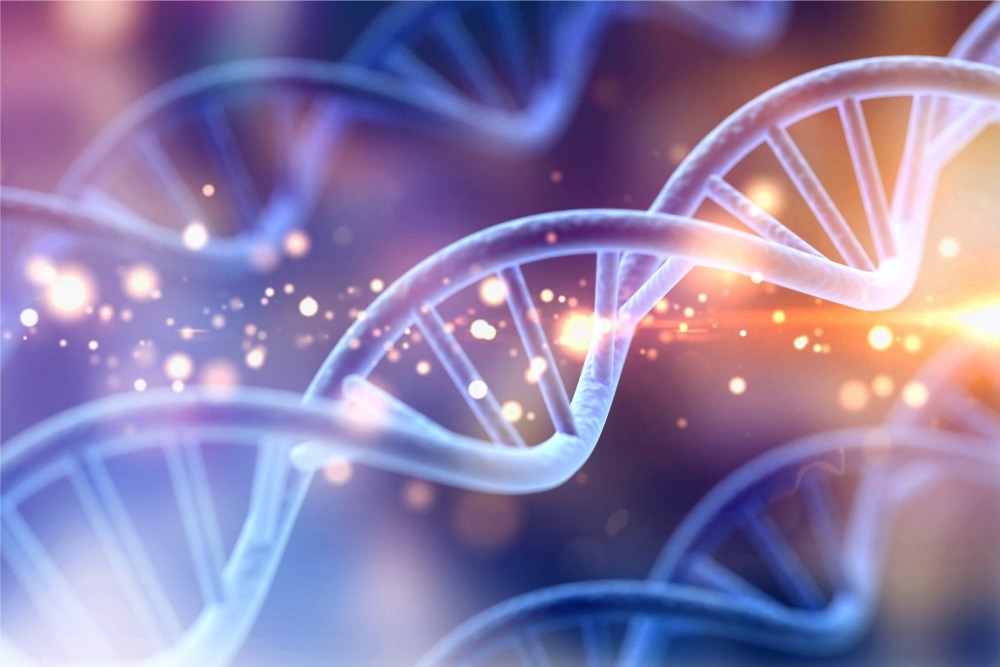Scientists at the University of Illinois have demonstrated that crumpled graphene can enhance graphene-based biosensors, increasing their sensitivity to DNA by ten thousand. The innovation could lead to a new approach for liquid biopsies, facilitating the early and accurate detection of cancer.
 Image Credits: Billion Photos / Shutterstock.com
Image Credits: Billion Photos / Shutterstock.com
Detecting cancer from blood samples
The team is optimistic that crumpled graphene will be useful to a wide range of biosensing applications, changing the face of medical diagnostics. Published in the journal Nature Communications this week, the new study demonstrates how crumpling two-dimensional graphene creates electrical hot spots, enhancing its sensitivity, an innovation that was proven to improve the speed of detecting cancer from DNA.
The approach is able to detect molecules that act as markers of disease in ultra-low concentrations, which is vital for early diagnosis. The results showed that this method is not only sensitive, and effective, but it is also low-cost and fast, making it highly adoptable in clinical settings.
Certain sequences of nucleic acids become overexpressed when a person has cancer. For many years scientists have devised methods of diagnosing cancer by detecting these specific nucleic acid sequences in DNA and RNA that are markers of the disease, however, the method had been limited due to needing large volumes to sample and large amounts of time and money to conduct sequencing.
What’s exciting about the approach innovated at the University of Illinois is that their sensor can detect small amounts of characteristic nucleic acid sequences from small amounts of serum without the need for further processing.
Increasing DNA-graphene interaction
Since scientists first isolated two-dimensional graphene, a single layer of carbon atoms, back in 2004, there has been a boom in research investigating and uncovering its many applications. The material has incredible properties, it is strong but flexible, with high electrical conductivity and chemical stability.
While it has been adopted for use in electronic sensors due to its cost-effectiveness in this field, nucleic-acid sensors have previously been limited due to the need for the lengthy and error-prone process of amplification, where fragments of DNA or RNA are isolated and replicated.
The Illinois-based team was motivated to create a solution where a graphene sensor could test a sample without the need for DNA amplification.
Previously, other teams have developed approaches that have successfully enhanced graphene’s properties by creating specifically crafted nanostructures. Instead of designing carefully thought structures, the team simply added graphene on top of a thin sheet of stretched-out plastic and released the tension, causing the structure to crumple.
This crumpled graphene was then tested to determine how sensitive it was at detecting DNA and cancer-related microRNA in both undiluted human blood and a buffer solution. The results showed that crumpled graphene was ten thousand times more sensitive than flat graphene. In fact, the team recorded the highest sensitivity ever found for electrical detection of a biomolecule.
To conclude why crumpled graphene was so sensitive the team studied its electrical properties and interactions with DNA using advanced computer simulations.
They revealed that cavities created by crumpling the material acted as electrical hotspots, attracting and trapping DNA and RNA molecules inside, resulting in increased interactions between the DNA/RNA and graphene, enhancing its sensitivity. Also, the sensitivity of the graphene was further increased as crumpling it altered its electrical properties, increasing its sensitivity to the DNA and RNA’s electrical charges.
Developing a new diagnostic method
Moving forward, the scientists involved in the project aim to create a device that could detect molecules within just a few drops of blood, in a similar way to how people measure their blood sugar. This would allow measurements of cancer biomarkers to be taken quickly, and in any location given their portability.
Source:
Crumpled graphene makes ultra-sensitive cancer DNA detector. Eurekalert. Available at: https://www.eurekalert.org/pub_releases/2020-03/uoia-cgm032320.php
Journal reference:
Hwang, M.T., Heiranian, M., Kim, Y. et al. (2020). Ultrasensitive detection of nucleic acids using deformed graphene channel field effect biosensors. Nature Communications. DOI: https://doi.org/10.1038/s41467-020-15330-9